On Saturday the San Francisco Mechanics had our first team meeting at the spacious and inviting new headquarters of the Berkeley Chess School. This is where the team will play half of its matches in the PRO Chess League in 2019; the other half will be played in the familiar environs of the Mechanics Institute in San Francisco.
Not everyone on the team could come to the meeting. In fact, three of our top players live abroad. (This is normal in the PRO Chess League, where “free agents” are allowed. However, at most one free agent can play in any given match.) Understandably, those players weren’t able to attend our meeting. Many of the team’s other players were there, including our two homegrown stars: U.S. Champion Sam Shankland and GM Daniel Naroditsky.
The lineup is still somewhat fluid, but here are the other players that I know about: Ezra Chambers, John Donaldson, Andrew Hong, Andy Lee, Yian Liou, GM Parimarjan Negi, Arun Sharma, Josiah Stearman, Rochelle Wu, and Steven Zierk. That’s 14 players for 15 available lineup positions.
You might wonder, as I did, how you can possibly fit 15 players onto a 4-man team. In fact, team manager David Pruess explained that the five grandmasters will probably play at least 20 matches total (i.e., 10 matches times 2 grandmasters per match). That leaves at most 20 slots available for the other ten players. So the lower-rated players will only get to play one or two matches in the entire season.
Why carry so many extra players? I think it’s to guarantee maximum flexibility, both in terms of player availability and in terms of rating. The average rating of the team for any match has to be under 2500 FIDE, and I know that David has several 2490-plus lineups in mind.
After the hour-long team meeting, the players spent two or three hours relaxing and playing 15-minute games (that being the speed of games in the PRO Chess League). Here are a few photos and one very interesting game fragment that I wrote down.
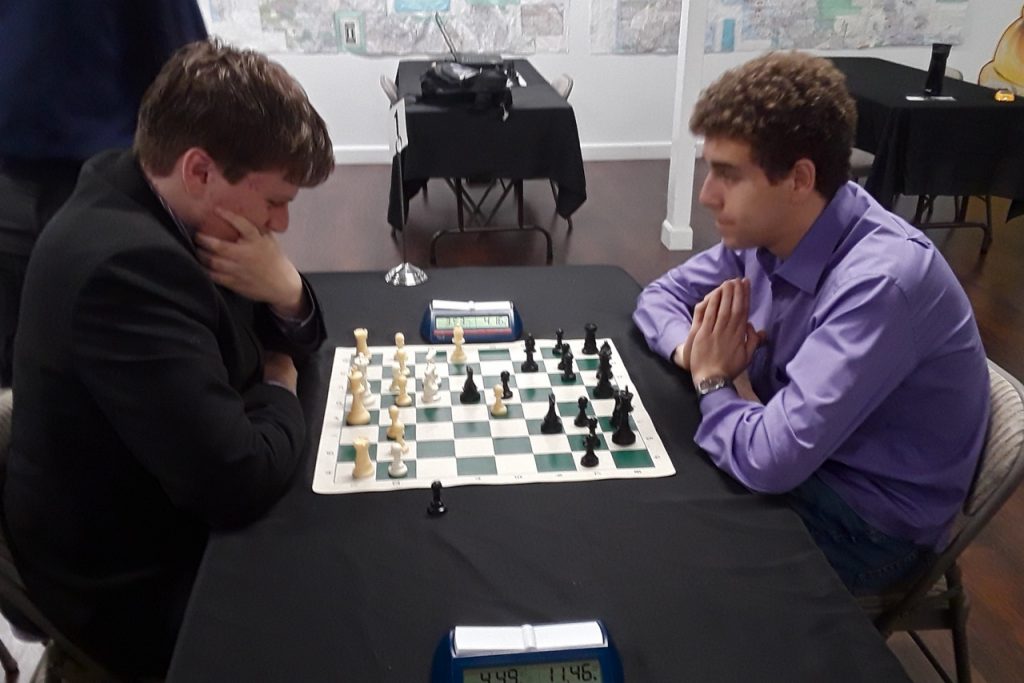
Here is how the position on the board arose:
1. e4 e5 2. Nf3 Nc6 3. Nc3 Nf6 4. Bb5 Nd4 5. Ba4 Bc5
This is a pretty standard pawn sacrifice that is supposed to equalize. When I went over the game on Rybka, the computer really likes a different pawn sac: 5. … Bb4!?, which has almost never been played in human competition. The idea is 6. Nxe5 Qe7 7. Ng4 Nxg4 8. Qxg4 f5, which looks quite promising.
6. Nxe5 O-O 7. Nd3 …
Every other move for White is bad. You can rack up lots of wins as Black against players under 2000 by playing this variation.
7. … Bb6 8. e5 d5?!?
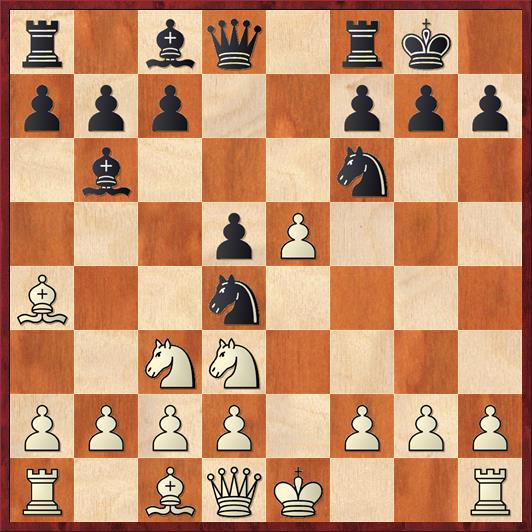
This is the position in the photo, with Ezra mulling over his next move. Danya’s last move is a pretty good example of what you can get away with if you are a grandmaster and you are playing 15-minute chess. According to the computer, Black doesn’t have even close to enough compensation after 9. ef. However, in a 15-minute game and against a grandmaster opponent, Ezra didn’t have time and wasn’t confident enough to take the bait. Instead he played 9. O-O? and got nuked about six moves later.
Next is a picture of Sam Shankland playing against 12-year-old Rochelle Wu. I certainly look forward to seeing how Rochelle does in the PRO Chess League. Though her FIDE rating is “only” 2096, she held her own with ease against players rated above 2300. I was extremely impressed by her calm, unflappable presence at the board. However, she acted somewhat strangely in the game against Sam. She looked bored, and I had to wonder whether it was a psychological ploy, to tell her opponent, “I’m not impressed by the fact that you are the U.S. champion and a 2700 player. In fact, I’m so unimpressed that I am not even going to pay attention to this position.” Can you imagine that? A 12-year-old girl trying to psych out the U.S. champion? It didn’t seem to work, though. Sam won the game. I still think that Rochelle is going to absolutely kick butt against any sub-2300 players in the league.
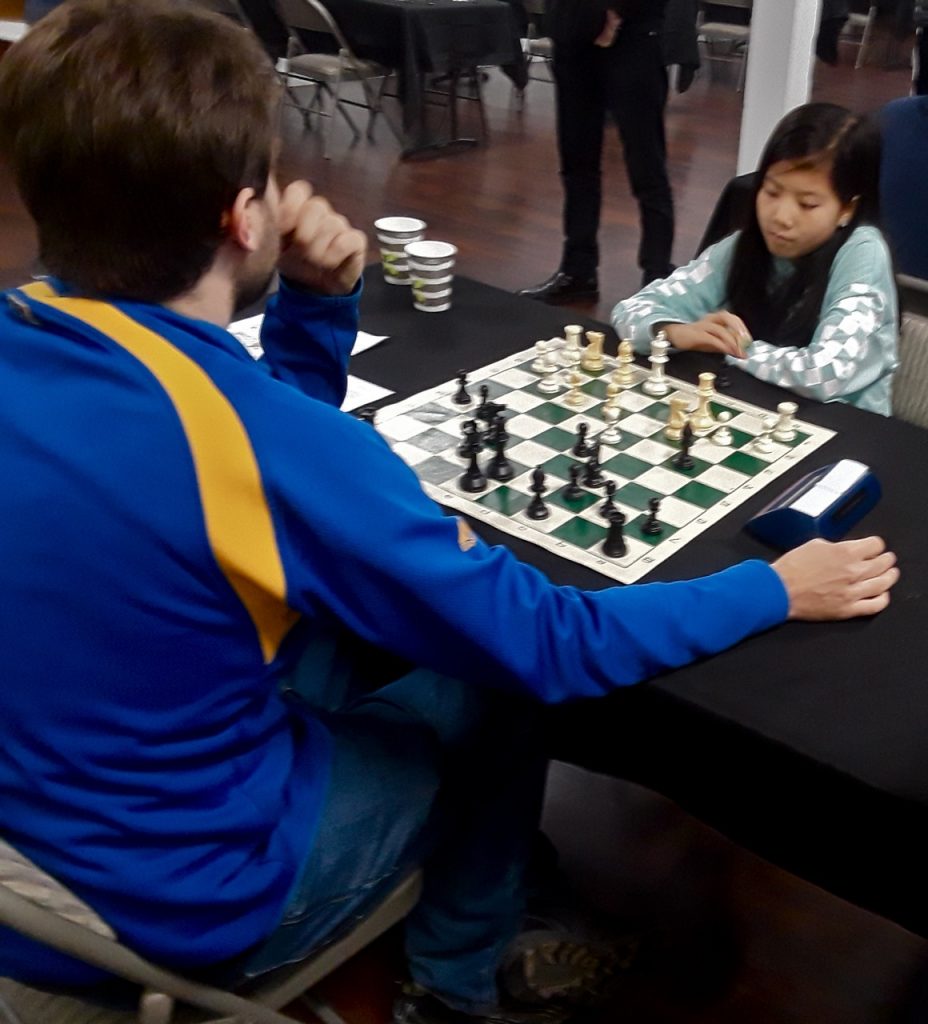
Because Sam is a trash talker par excellence, I’m sure he won’t mind my saying that he was UTTERLY BUSTED in a game against his former mentor, Andy Lee, in the game below. After the game Sam said, “It’s hard for me to play against people who played me when I was a kid. When you look at me, you still see the little twerp that you used to beat.”
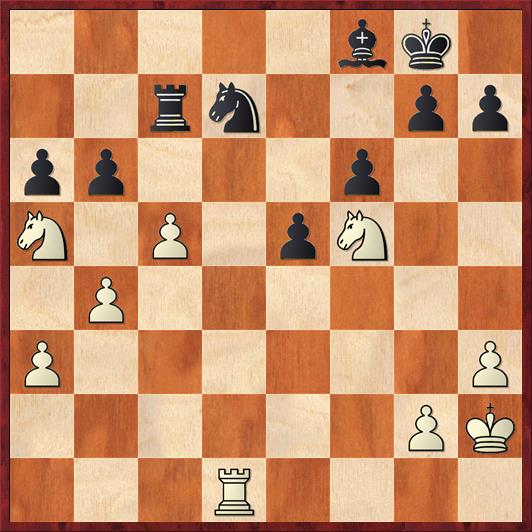
FEN: 5bk1/2rn2pp/pp3p2/N1P1pN2/1P6/P6P/6PK/3R4 w – – 0 1
Andy is playing White here. Sam has just played … b6, inviting the following sacrifice. For Andy, it’s “Why not?” It certainly beats suffering in a pawn-down endgame.
1. Rxd7! Rxd7 2. cb Bd6?
Sam immediately goes wrong. After the game he said he had to kick the knight right away with 2. … g6. For example, if 3. b7 Rxb7! 4. Nxb7 gf Black’s bishop is perfectly posted — White can’t make any headway on the queenside, and Black’s central pawn mass should be decisive.
3. Nc6! …
The move that Sam missed, or underestimated. Now 4. Nxd6 is a serious threat, and the bishop has to go back with its tail between its legs to f8.
3. … Bf8 4. a4 g6 5. Ne3 e4 6. g3 Rd3 7. Nc4 …
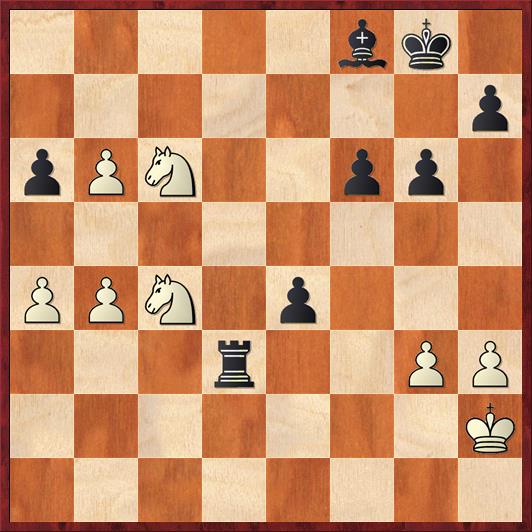
An extremely tense position. According to the computer, the way for Black to draw is to retreat with 7. … Rd7. But it’s almost impossible to play waiting moves in a position like this, and in a blitz time control. Sam is still fighting for a win, and he is not willing to hand over the reins to his opponent. For me, even with the benefit of computer analysis, it’s a little bit hard to believe that Black can just play rope-a-dope here. So from the practical point of view, Sam’s next move seems reasonable. But he is left with no way to stop White’s b-pawn.
7. … e3? 8. Kg2 Rc3
Here Sam’s body language suddenly changed from “I’m trying to win” to “I hope I can save a draw.” Andy’s changed to “Oh boy! I’m getting a queen!”
9. b7 Rxc4 10. b8Q Rxc6
The knights died honorably, and a new monarch has been crowned.
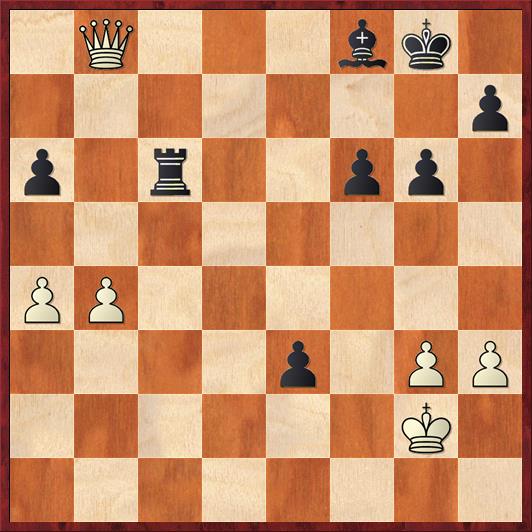
FEN: 1Q3bk1/7p/p1r2pp1/8/PP6/4p1PP/6K1/8 w – – 0 11
This is a really interesting moment, because the position has radically transformed. Previously, White was behind in material and was trying to create counterplay and queen his b-pawn. Now Black is behind in material (well, nominally even, but White’s queen is clearly the dominant piece) and struggling to create counterplay and queen his e-pawn.
When the position changes radically, it’s a good time to take a deep breath, maybe walk away from the board for a few seconds and then take a fresh look at the position. Unfortunately, Andy doesn’t have time to do that. I didn’t write down the time on the clocks, but I think he had less than a minute left, to Sam’s four minutes.
11. Qe8? …
Andy misses his chance to become an Internet legend by defeating the reigning U.S. champion. White’s winning plan is very simple: 11. Kf3 (forcing the rook to a defensive position) 11. … Re6 12. Ke2. With the e-pawn securely blockaded, White can go on to the next part of his plan, which is 13. b5 followed by 14. a5! Note that the a-pawn is much harder for Black to stop than the b-pawn, because his rook and bishop cannot work together.
Even so, maybe Black can still fight for a draw by sacrificing his bishop for the a-pawn and trying to set up a fortress position with his rook and remaining pawns. This is tough to evaluate, and a computer is no help at all.
Nevertheless, I think the lesson is clear. It’s easier for White to fight against Black’s two pieces if he can call on two pieces of his own (the king and queen). And it’s critical for the king to blockade the e-pawn on a white square.
After the text move, 11. Qe8, the computer says that Black is fine.
11. … Rc2+ 12. Kf3 e2 13. b5 ab 14. ab Kg7 15. Kf2? Rb2?
I’m not completely sure if this is the correct move sequence, because I stopped writing down the moves after 14. ab. But I’m pretty sure that the next diagrammed position is correct, and this is the only way I can see to get there.
16. Qd7+ Kh6 17. Qc6 …
Andy was down to just seconds by now, and he missed Sam’s winning answer.
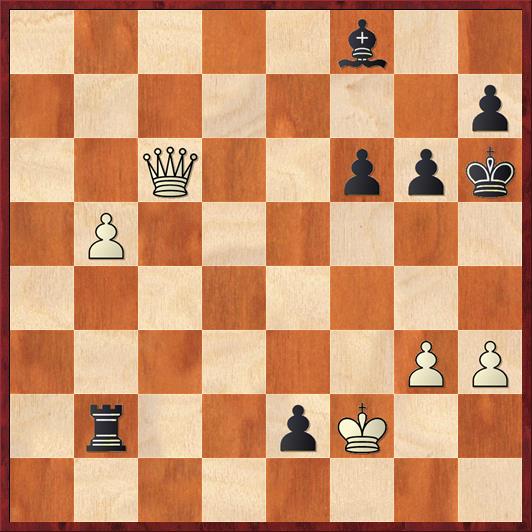
FEN: 5b2/7p/2Q2ppk/1P6/8/6PP/1r2pK2/8 b – – 0 17
17. … Bb4!
Ouch. This is why the pawn had to be blockaded on a white square. The rest is just mopping up for Sam.
18. Qc1+ Bd2 19. Qxb2 e1Q+ 20. Kf3 Qe3+ 21. Kg2 Qe2+ 22. Kh1 Qf1+ 23. Kh2 Be3 24. White resigns
The only way to stop checkmate is to play 24. Qg2, but the trade of queens leads to a hopeless endgame for White. Or Black can even play 24. … Qxb5 if he wants.


